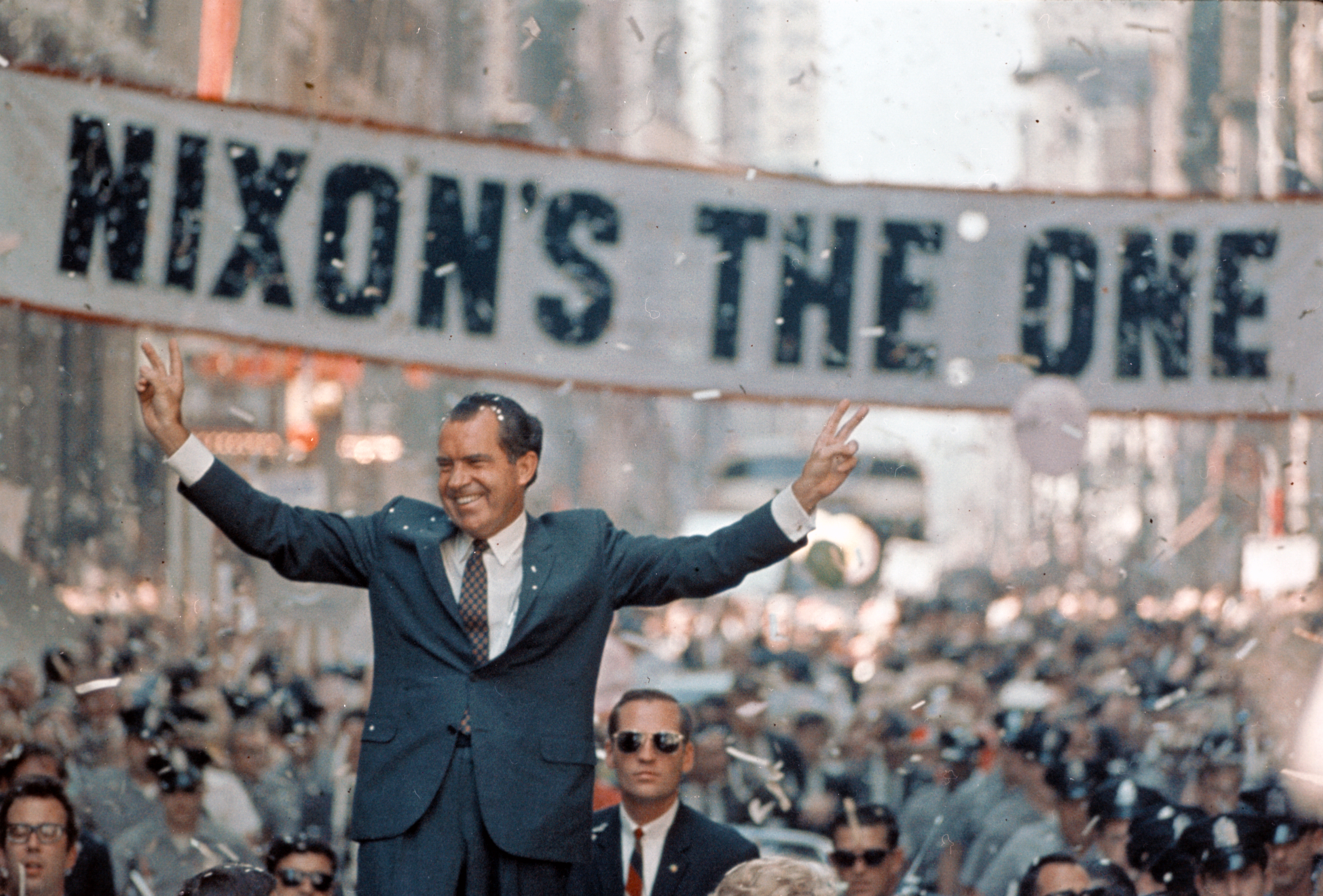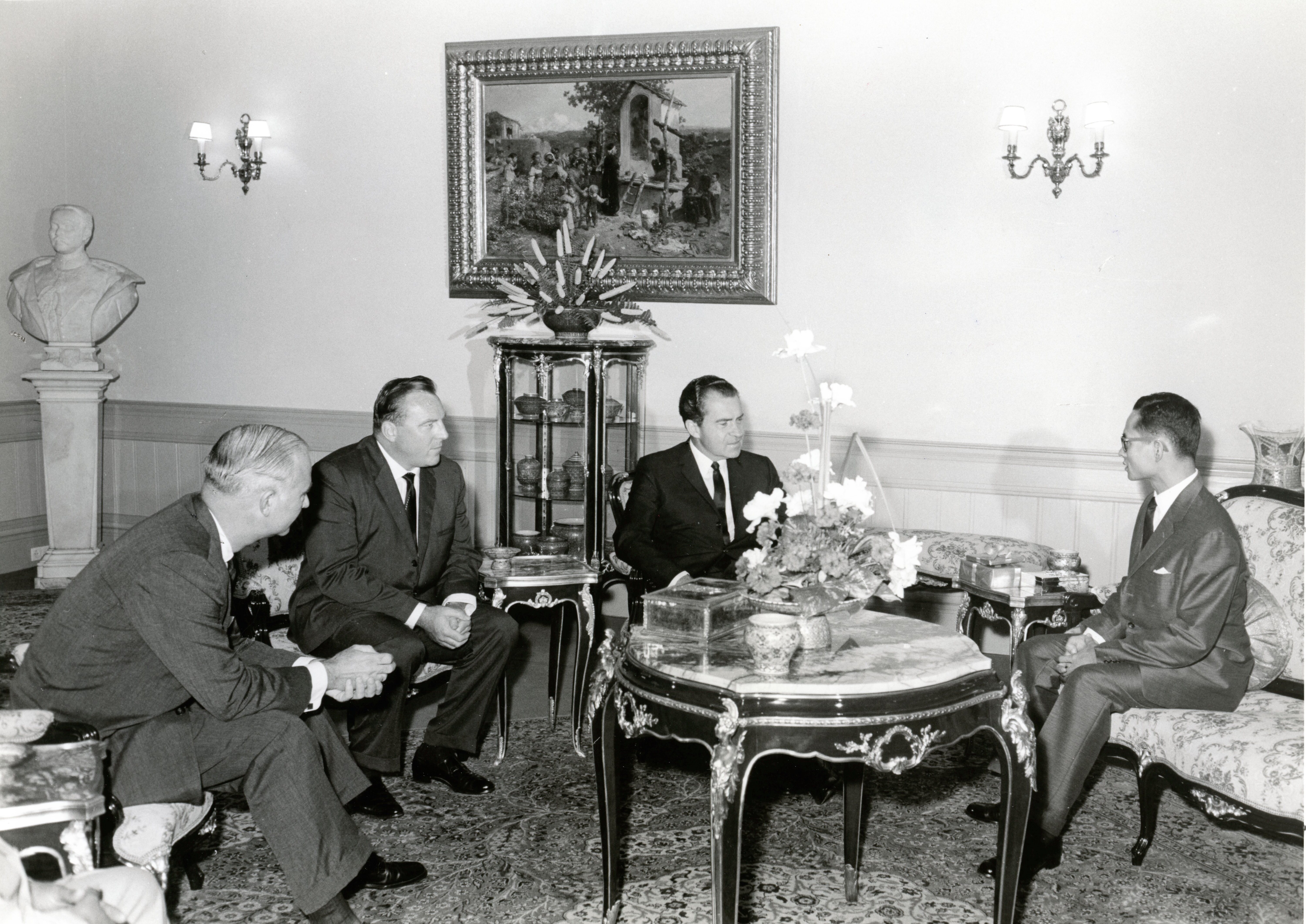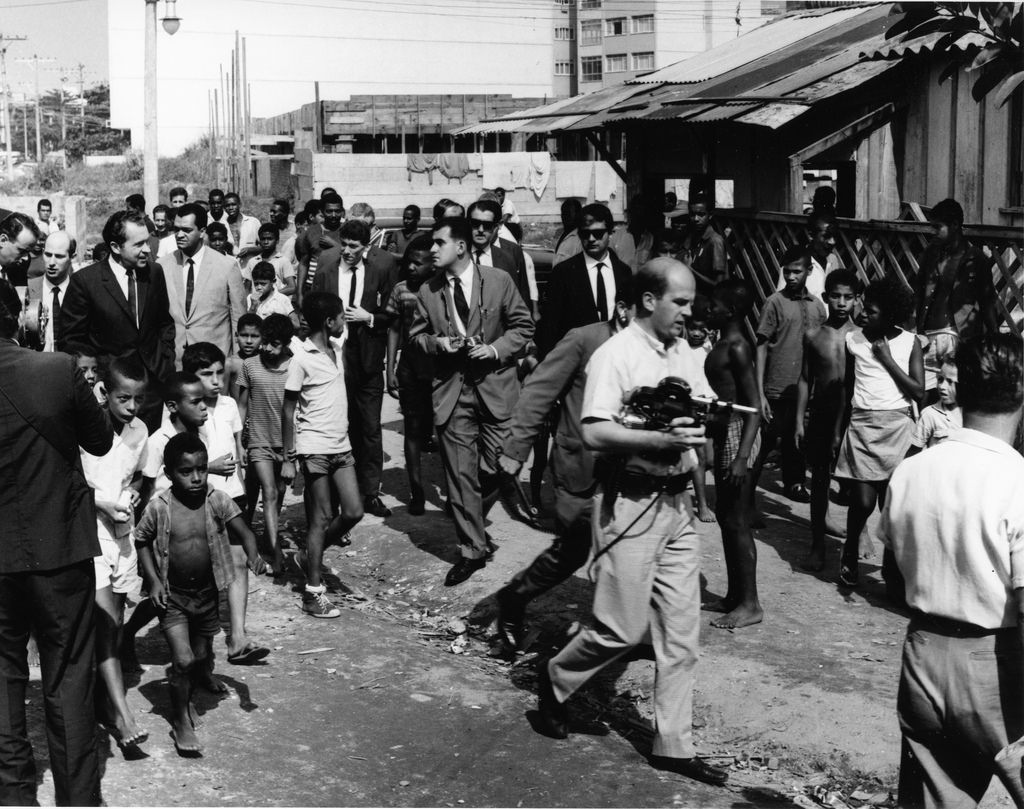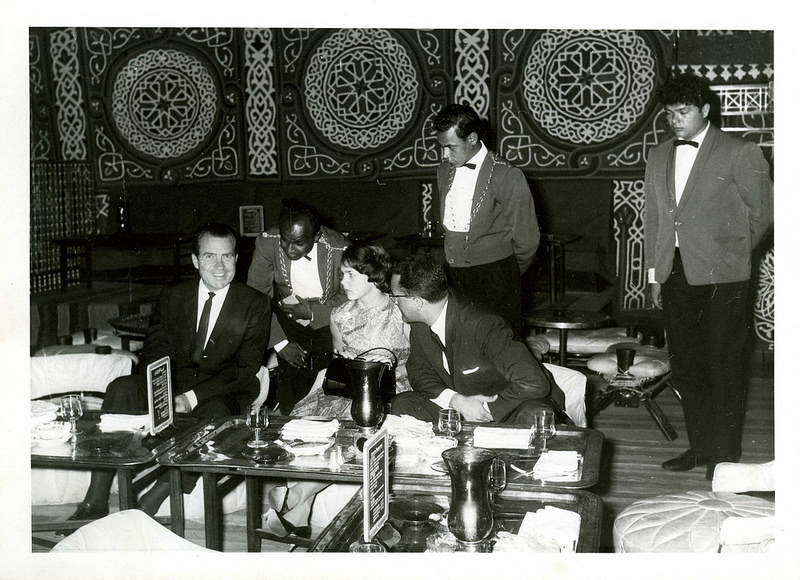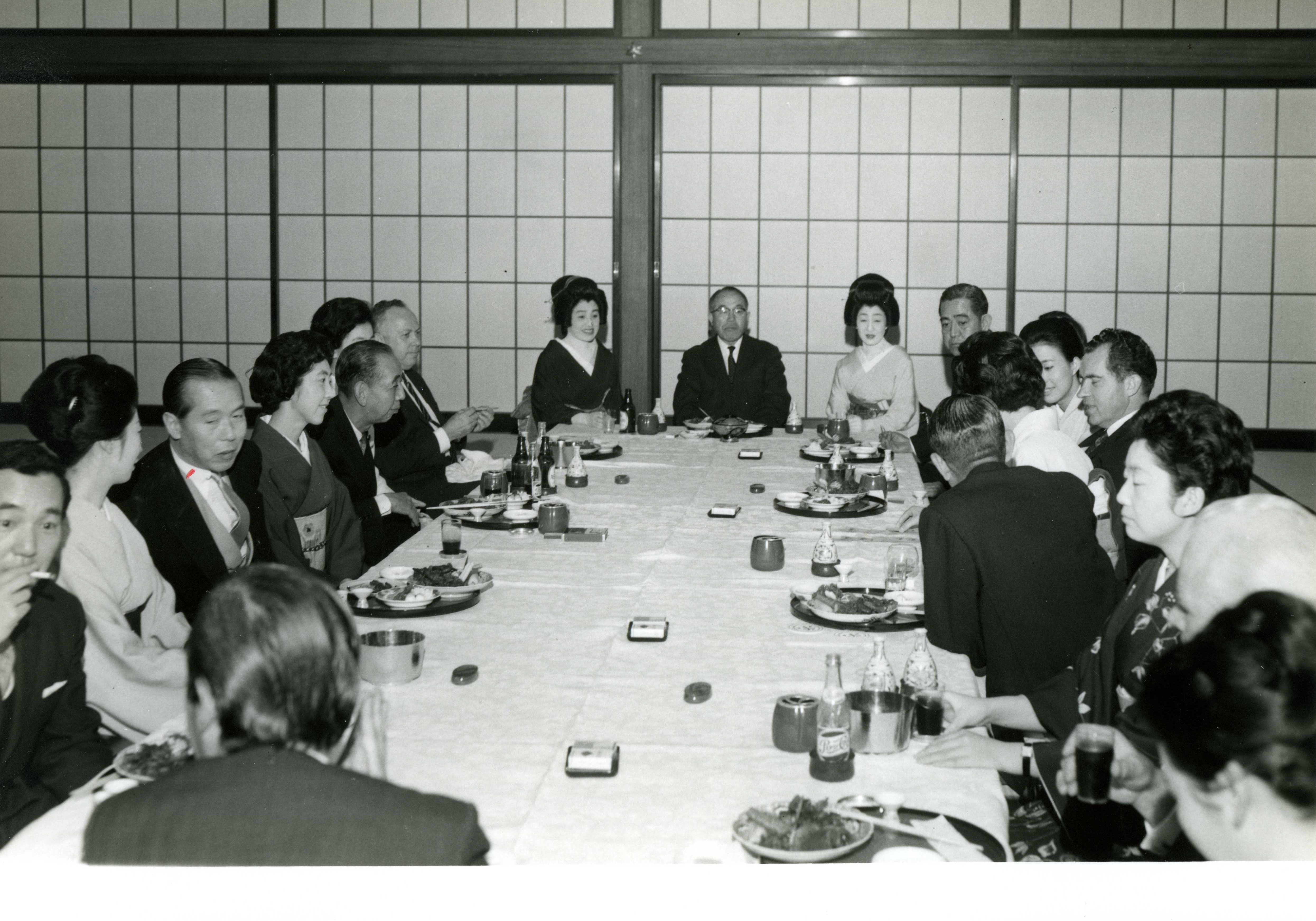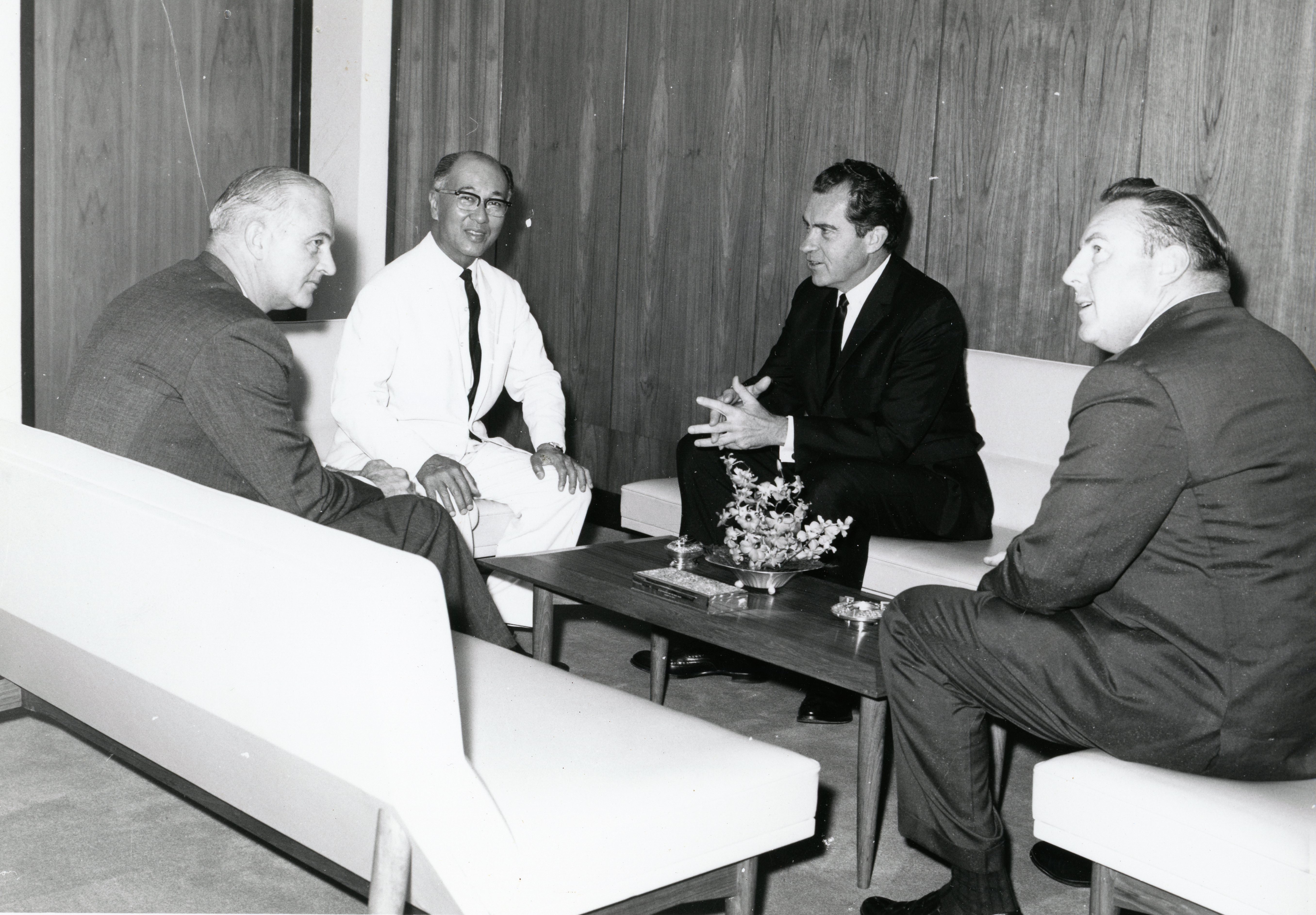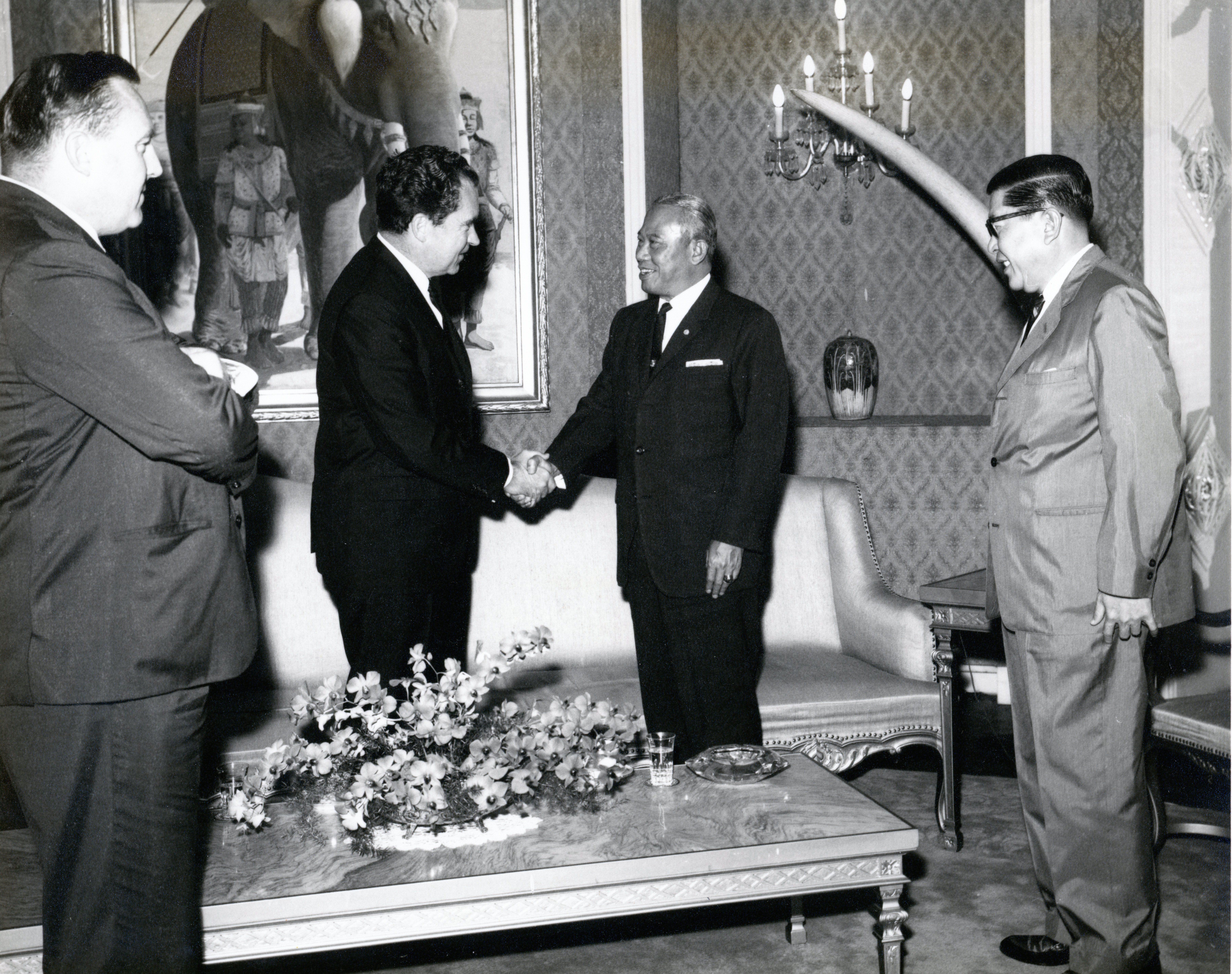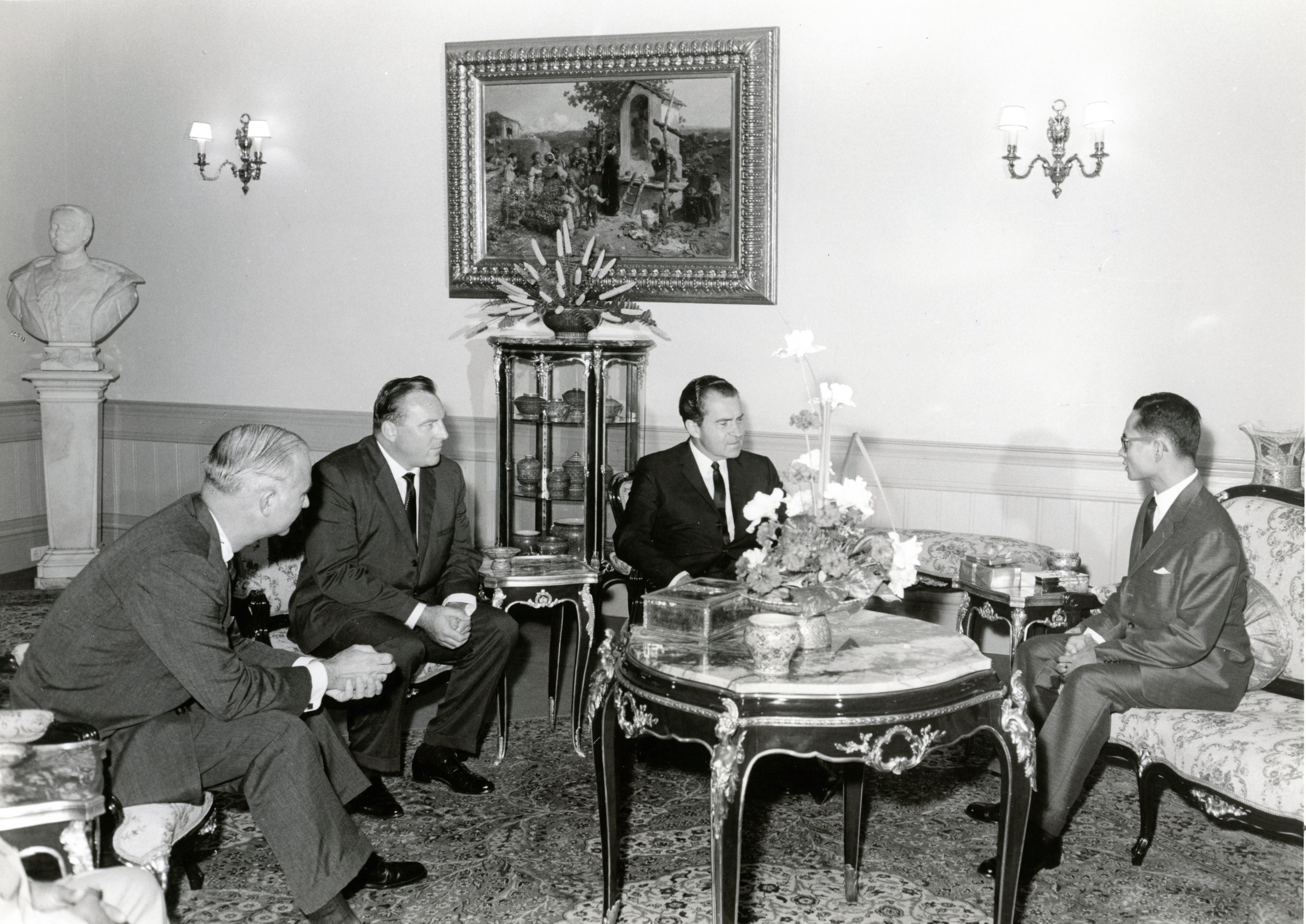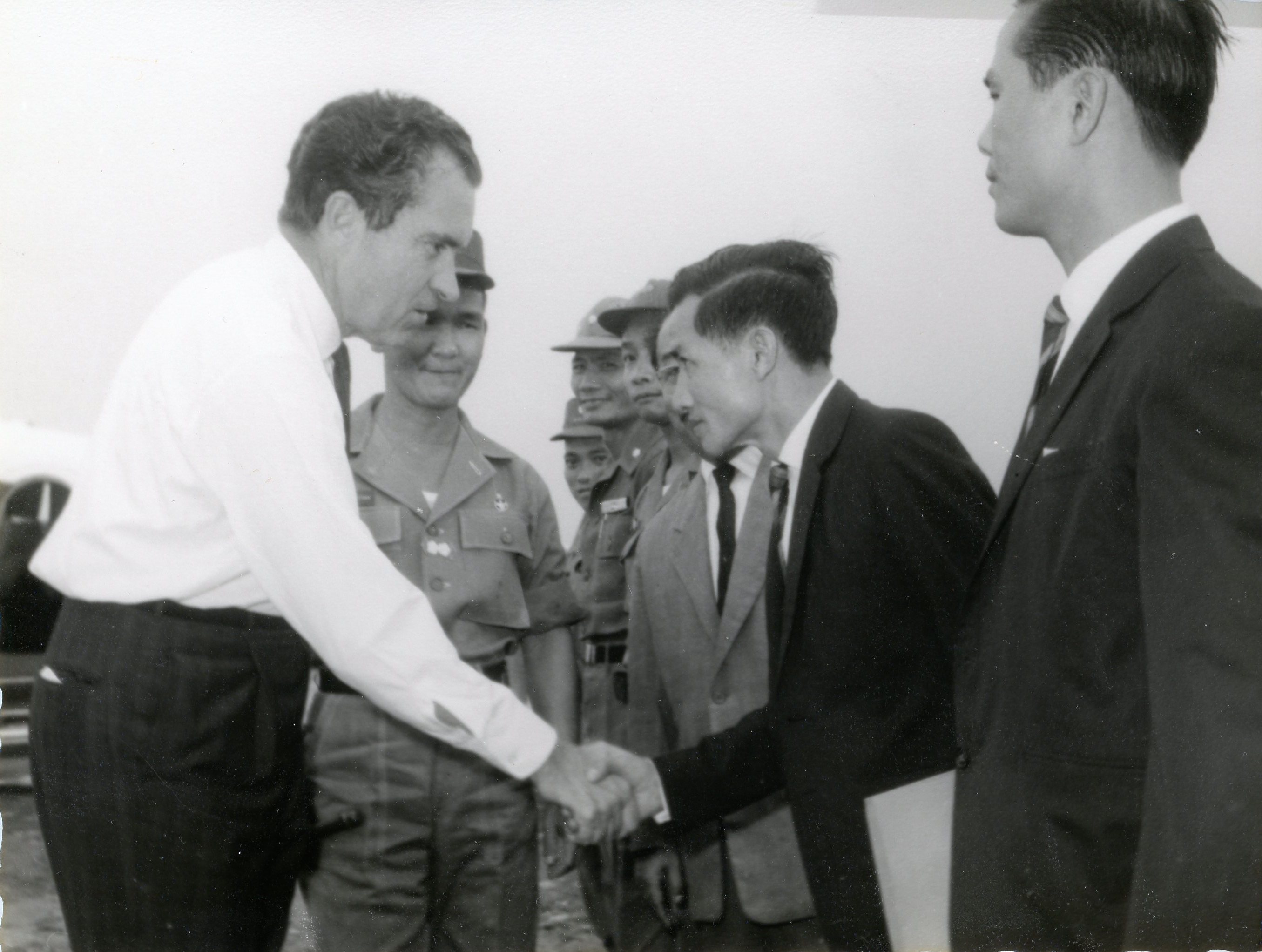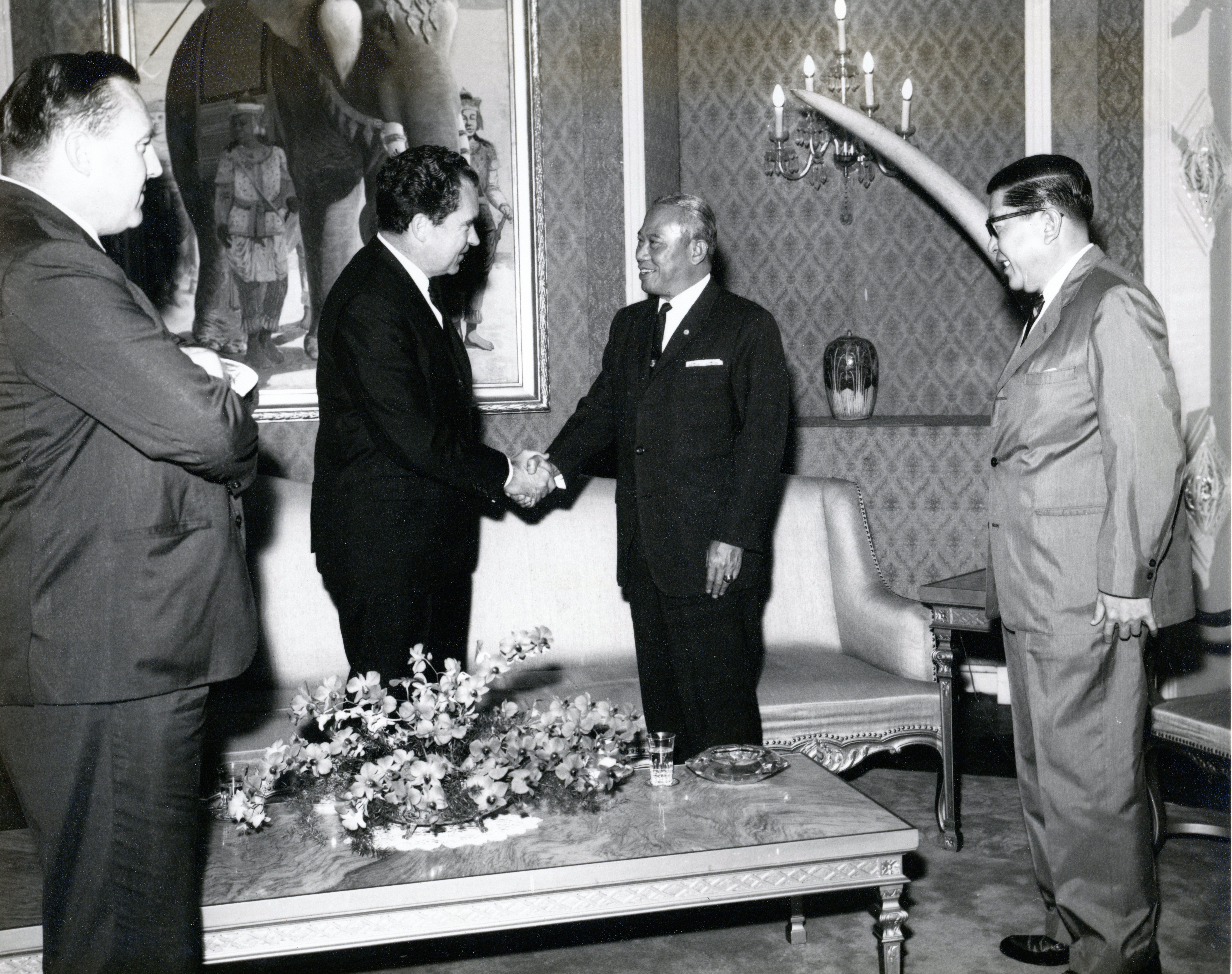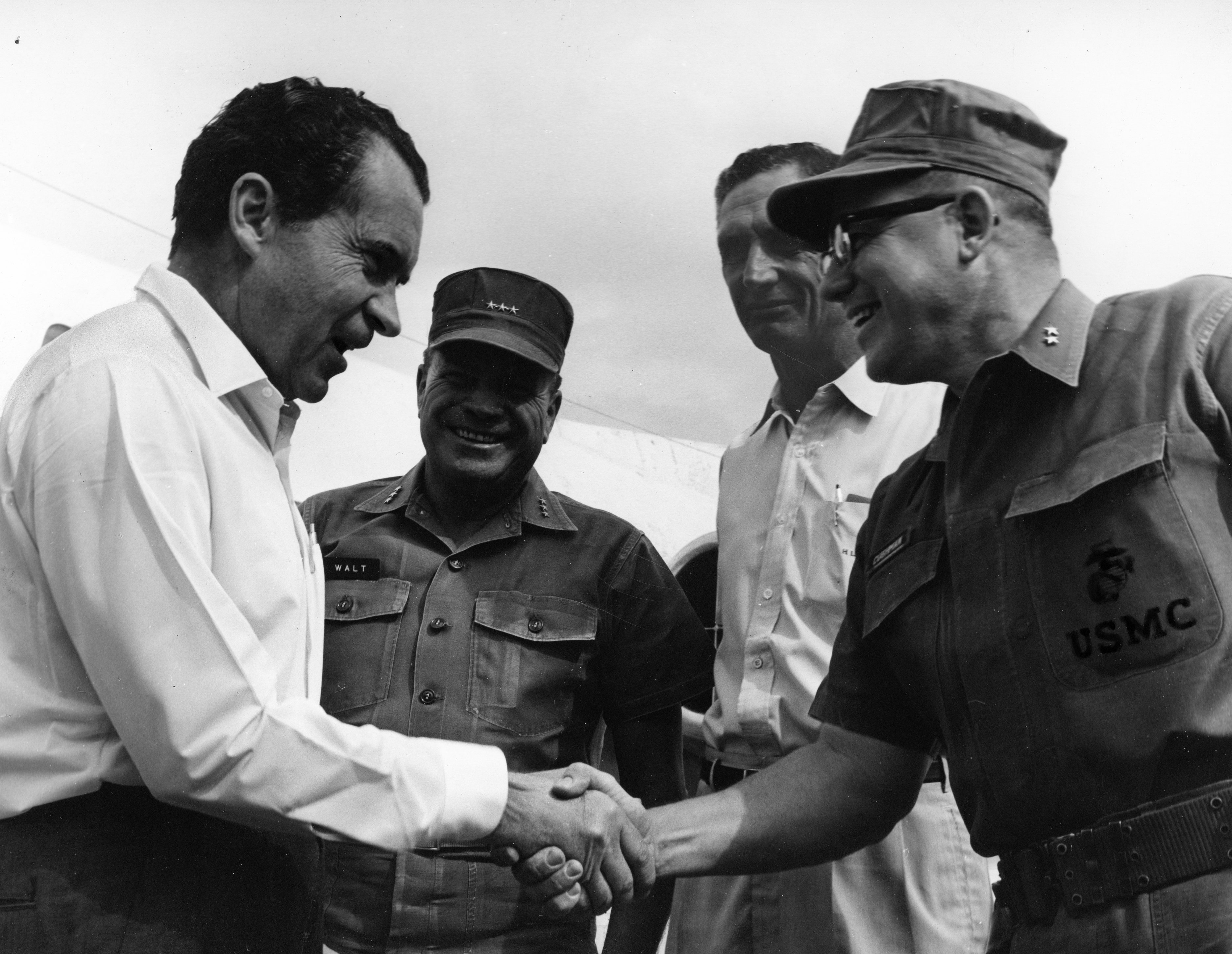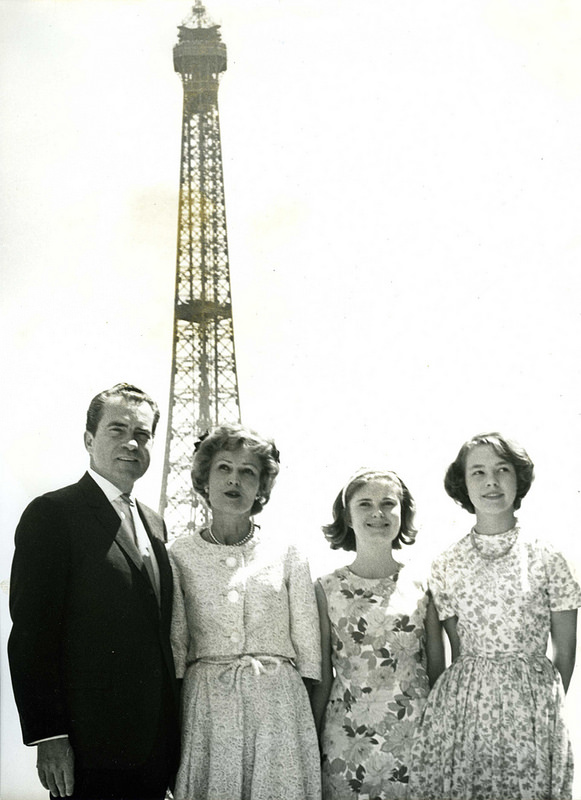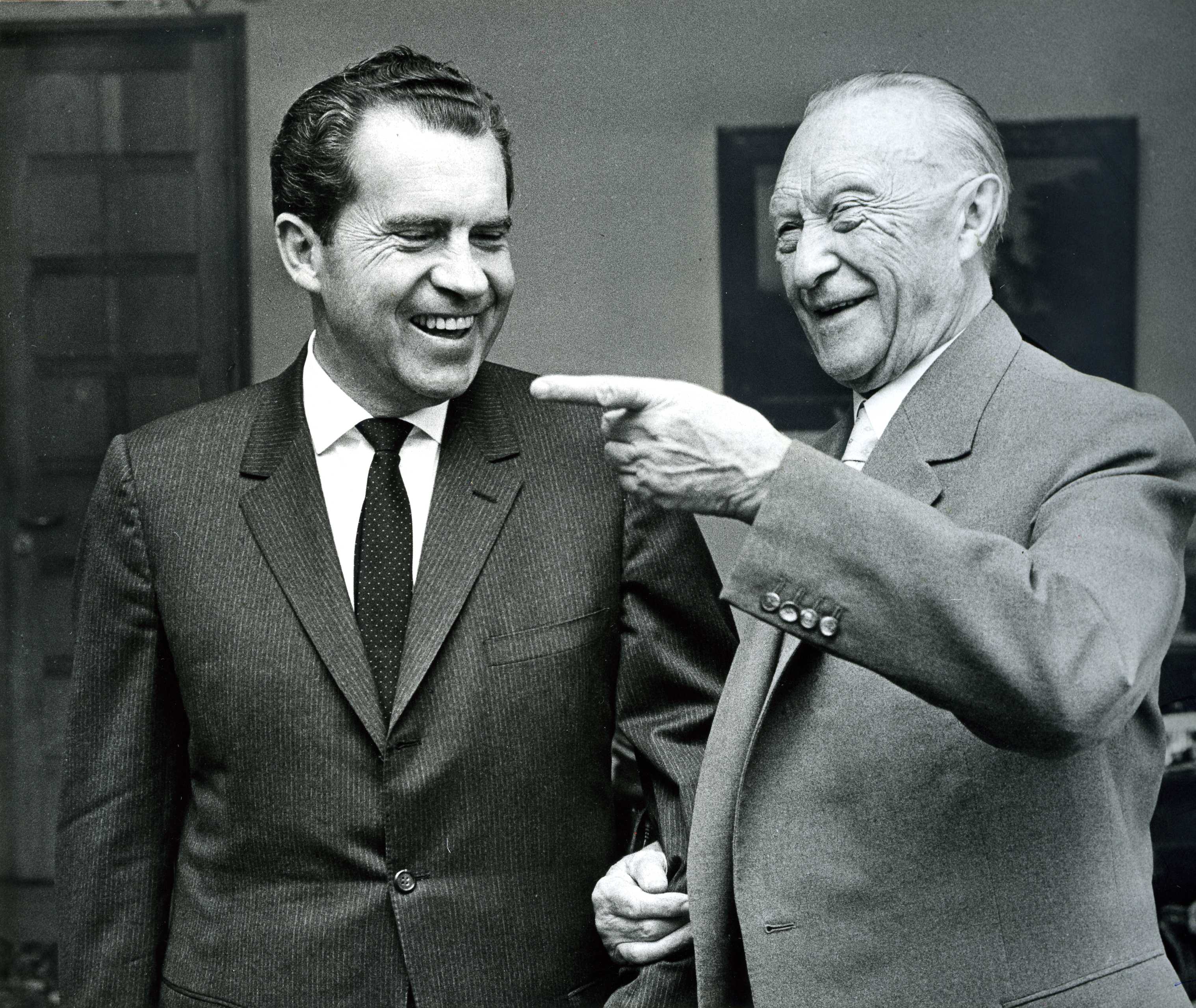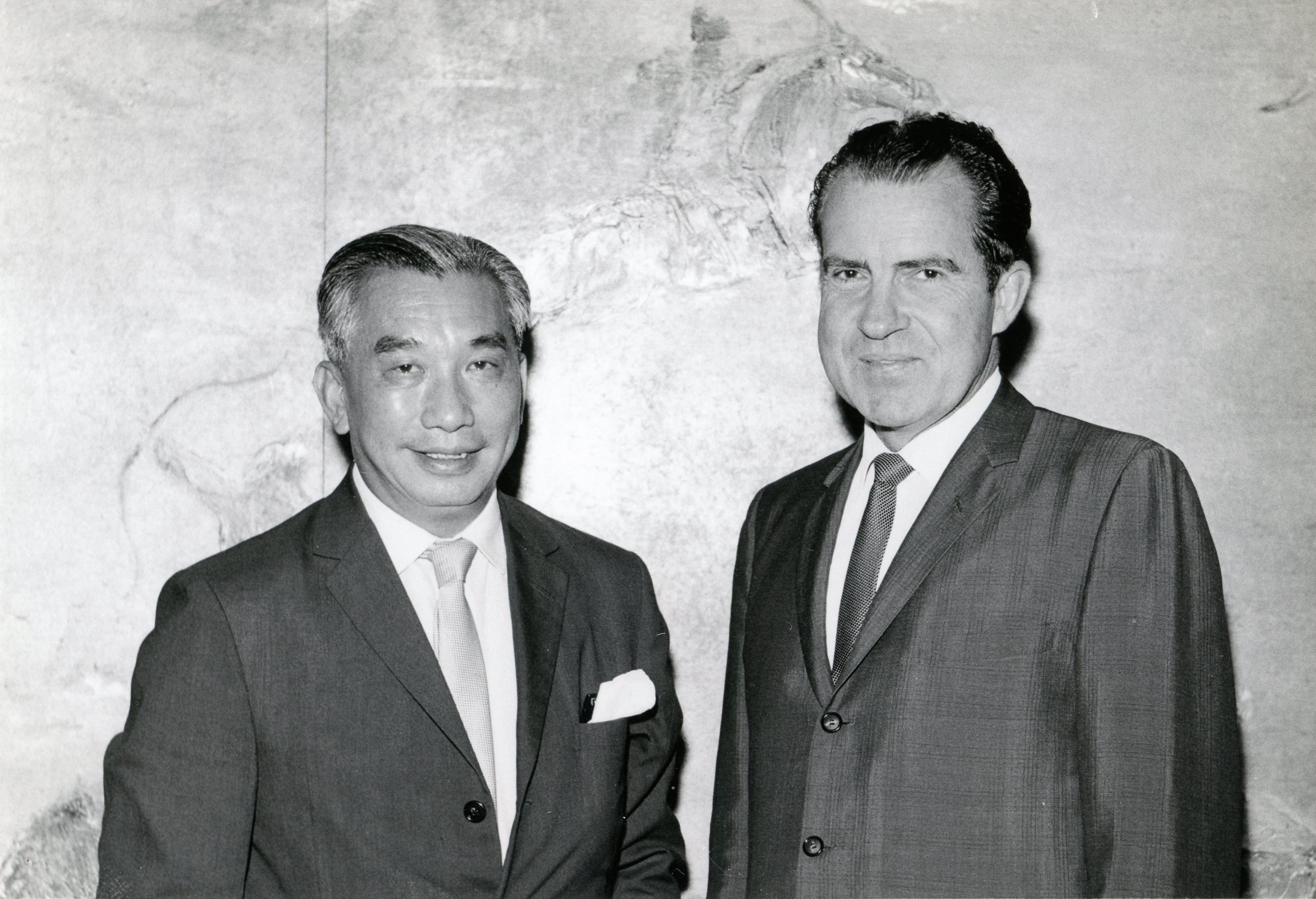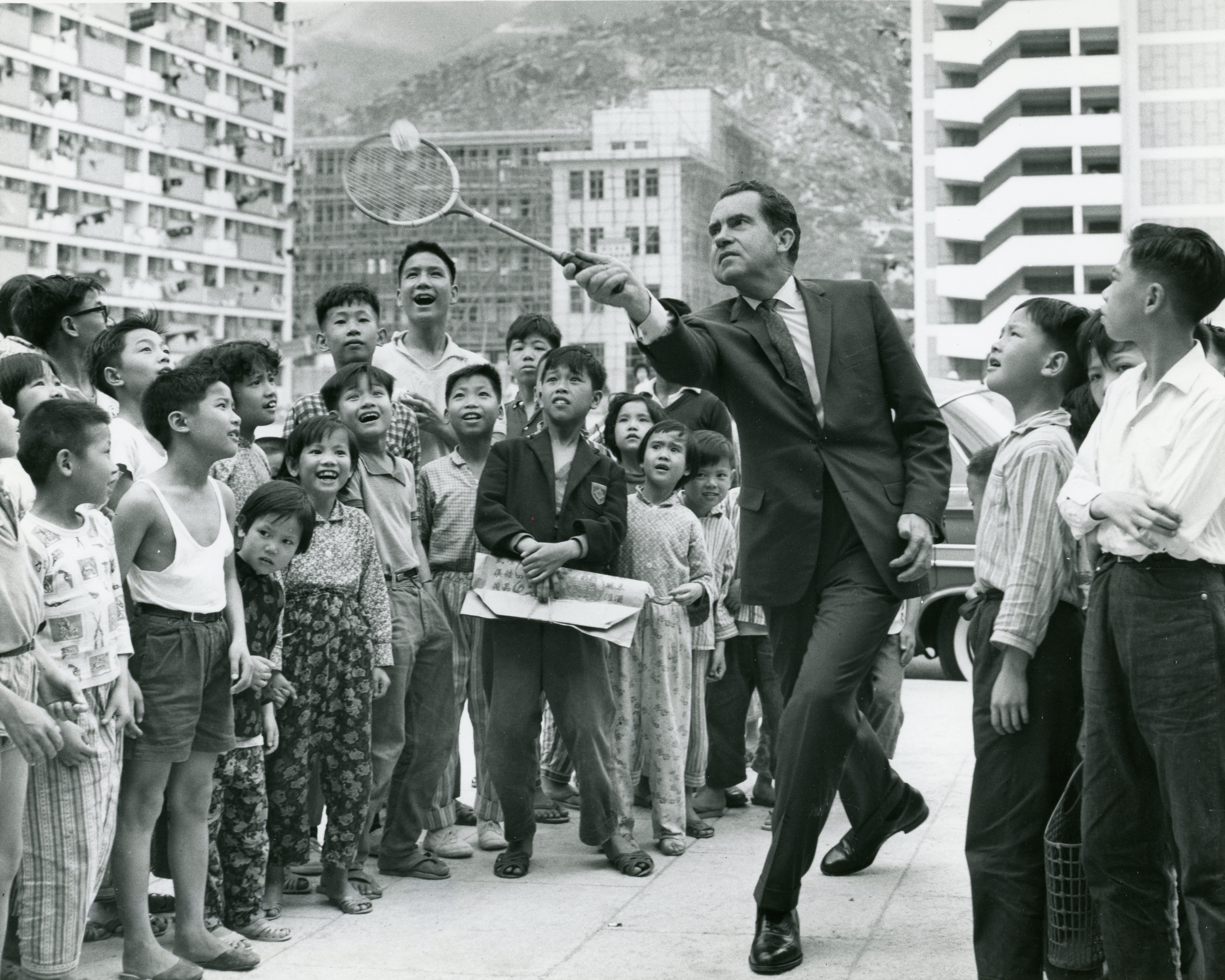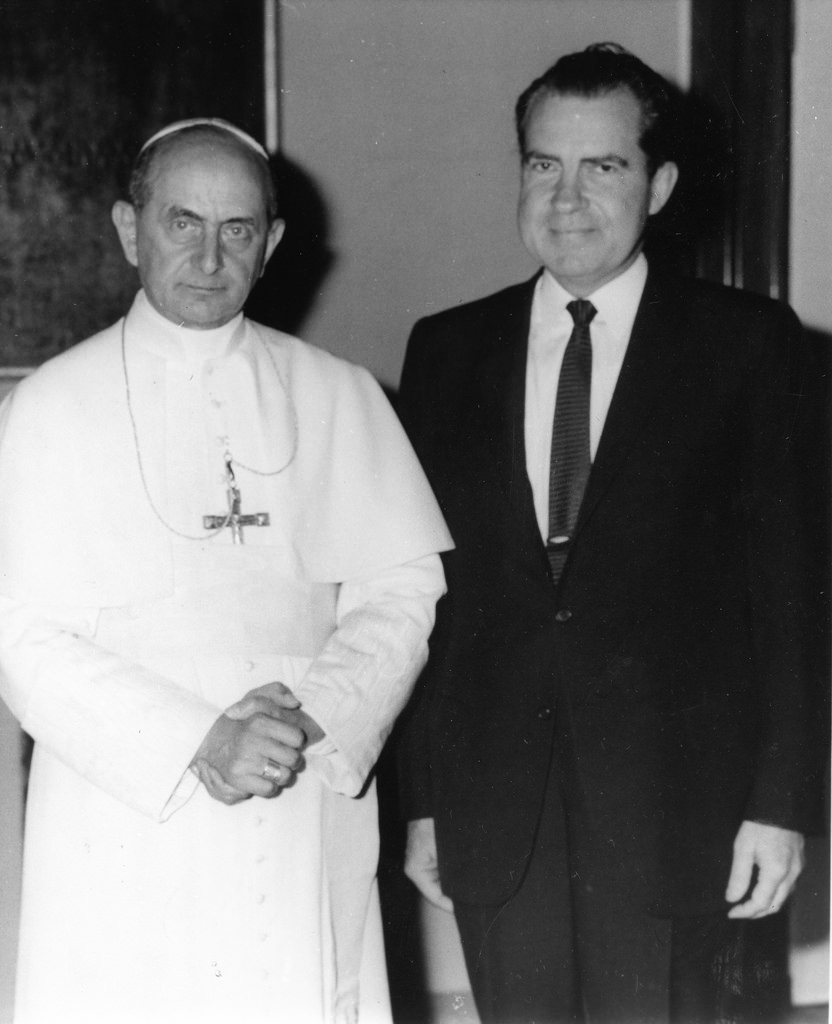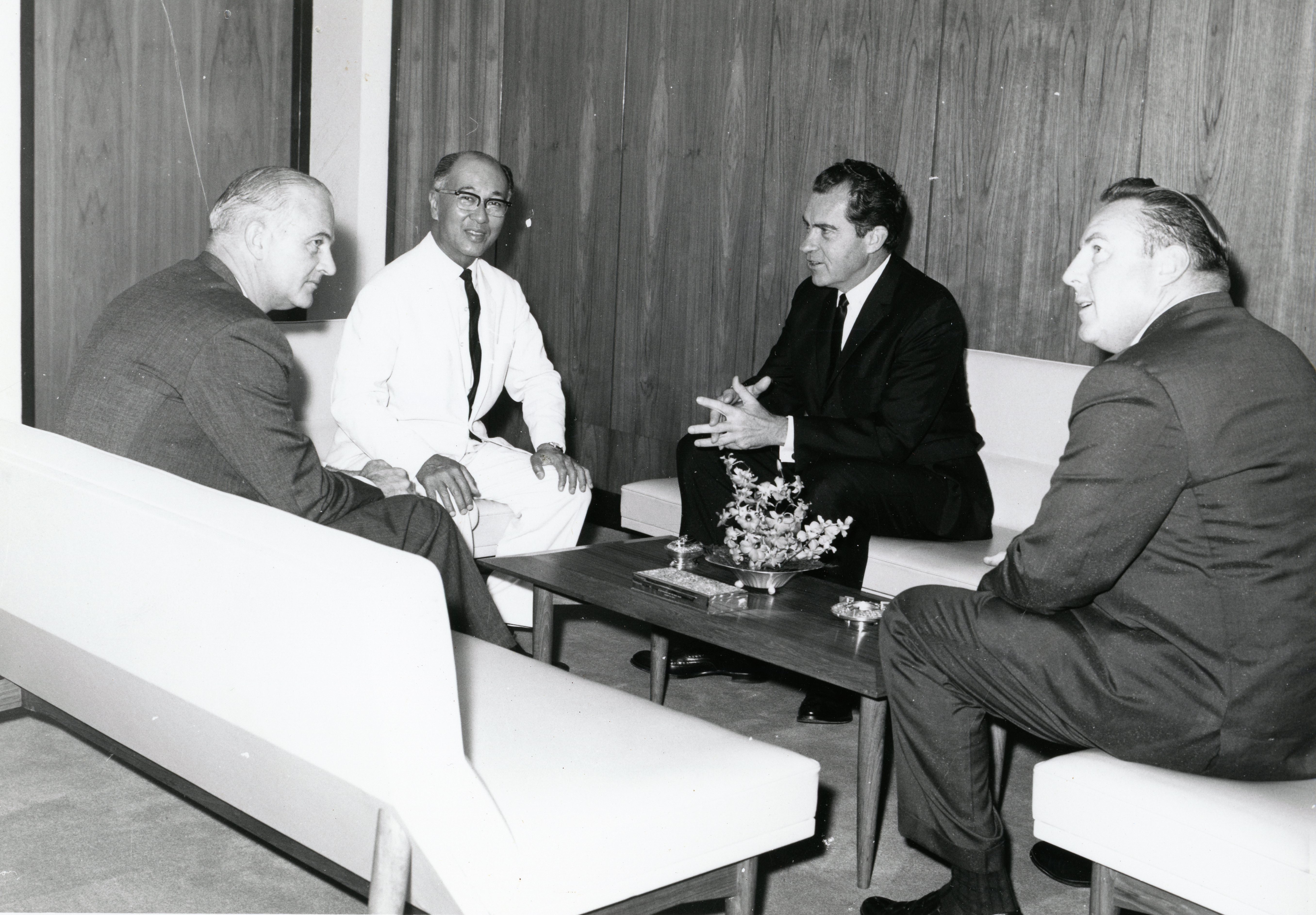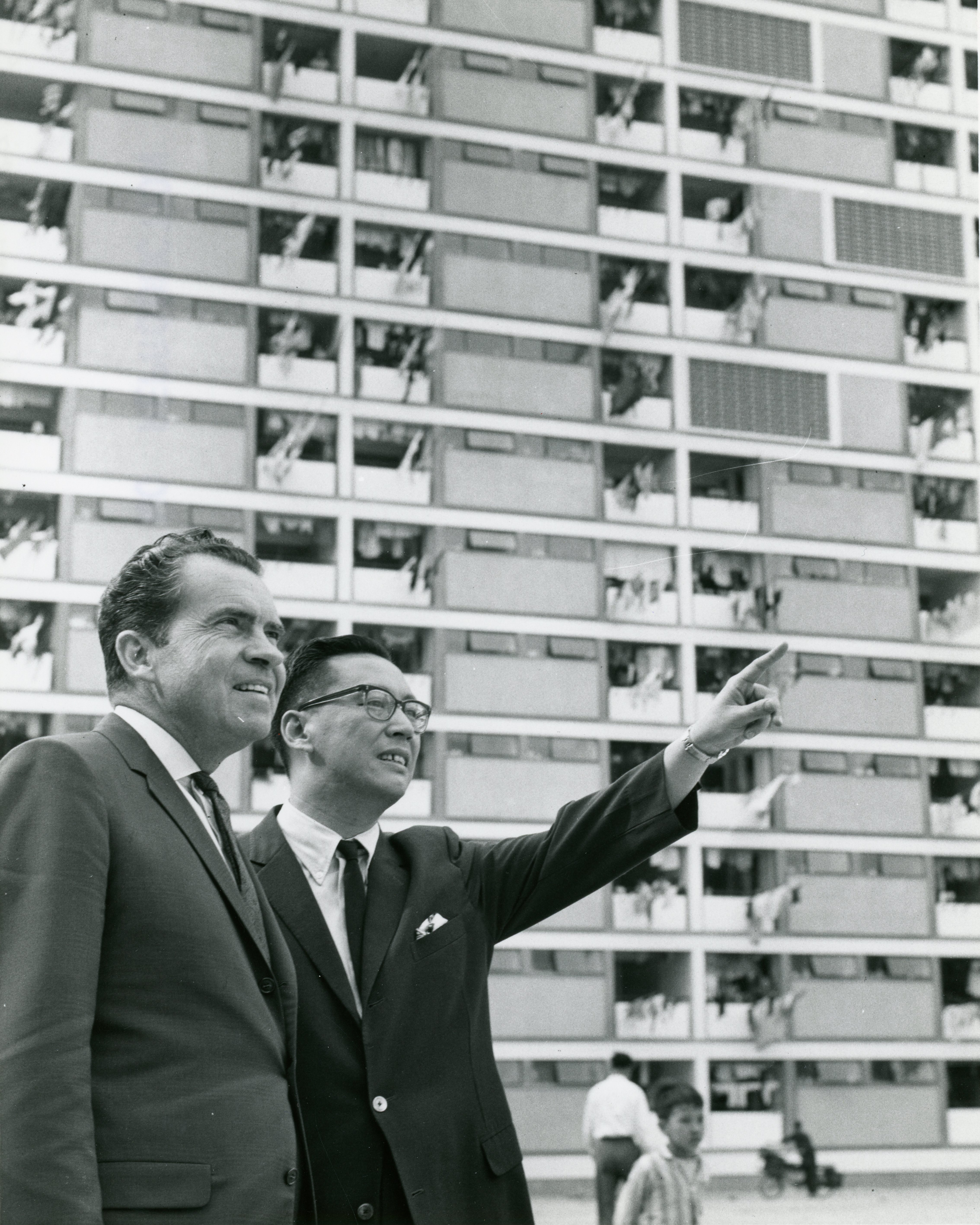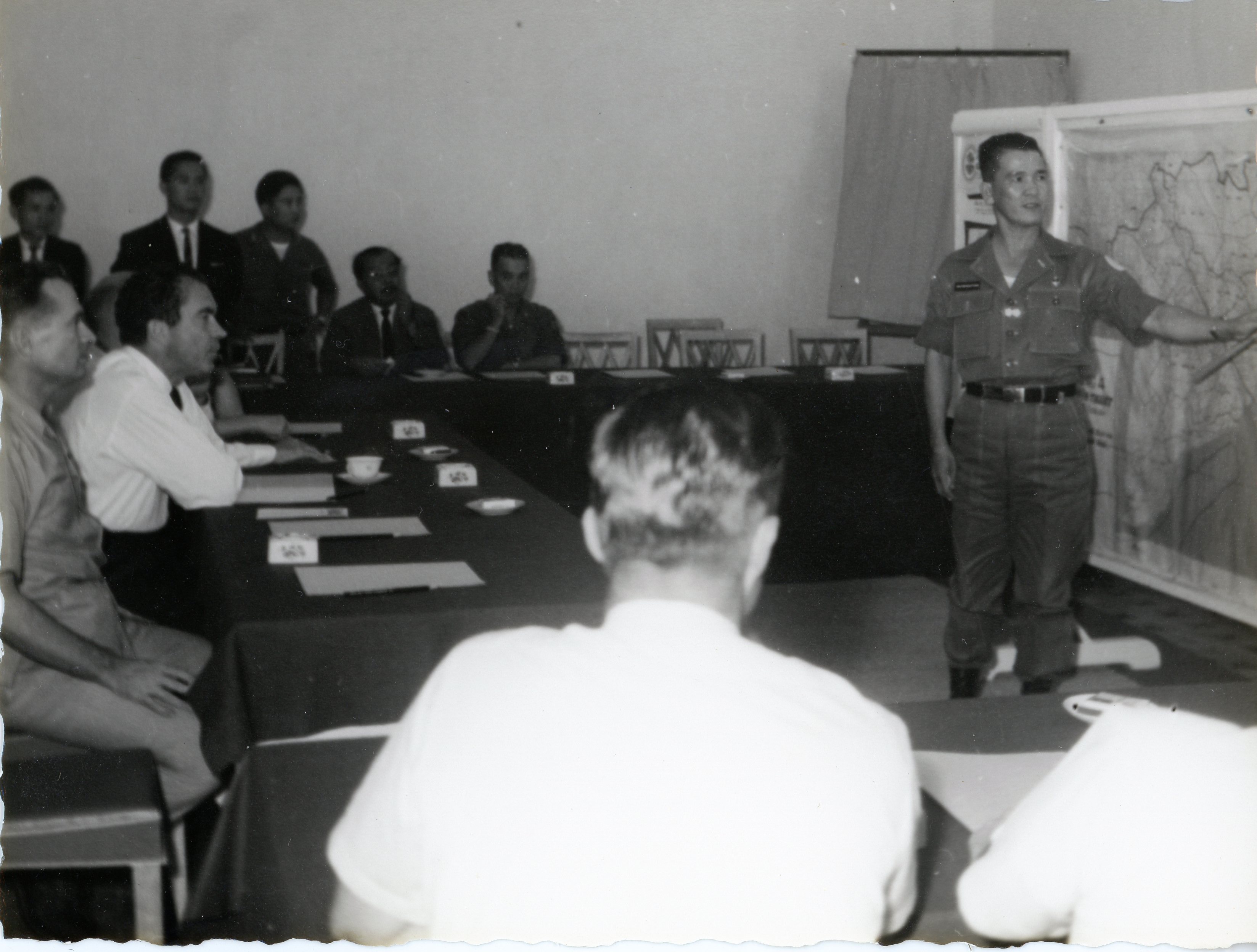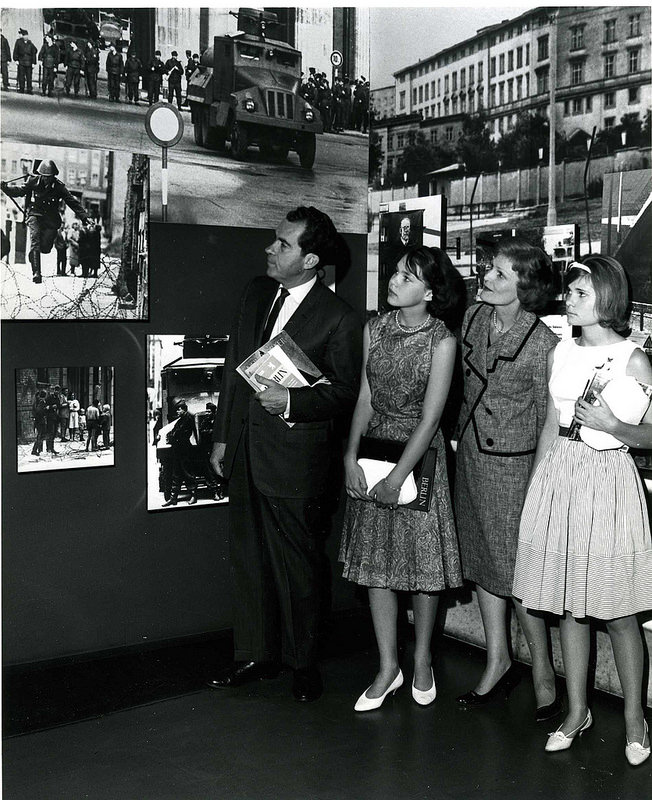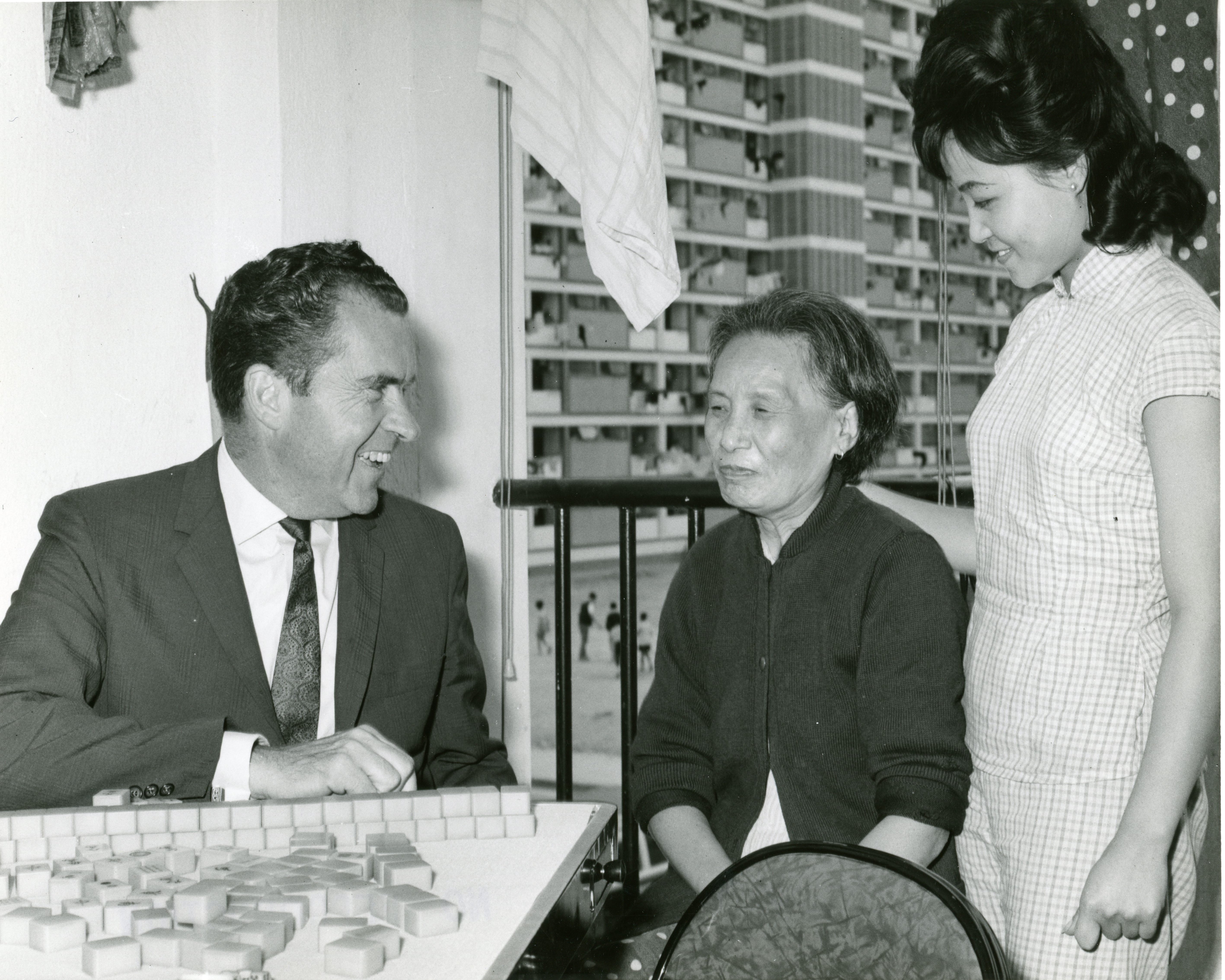A great philosophy is never one without defeat. It is always one without fear. What is important is that a man or a woman engage in battle, be in the arena.
Richard Nixon’s path to the presidency was not easy. Having always been active in the political arena and a tireless campaigner for the Republican Party, Nixon experienced uplifting victories but also encountered some devastating defeats. After a career in law, and in the U.S. Navy during World War II, Nixon ran for political office and won a seat in the U.S. House of Representatives in 1946. While working on a special committee for foreign aid, Nixon traveled to Europe and quickly made a name for himself in Washington as a politician who had a finger on the pulse of international politics. He climbed the political ladder quickly, and in 1952 at the young age of 39, won the nomination as Eisenhower’s vice president.
After serving as one of the most active vice presidents for two terms, Nixon lost a heartbreaking 1960 presidential race to then Massachusetts Senator John F. Kennedy. It was a close race and a tough loss, and followed two years later by another crushing defeat in the gubernatorial race of his home state in California. Hounded by the press and prompted by the needs of a family taxed by the political life and campaigns, Nixon left politics dramatically and moved to New York City to resume his work in law. This was the beginning of Nixon’s “Wilderness Years”, and though at the time his political future looked bleak, it was only the beginning of his journey to the appointment he is remembered for today.
Timeline
[exhibit]
Last Press Conference
In 1962, after losing the gube rnatorial race in California, Richard Nixon delivered a press conference that was to act as his concession speech. He infamously ended the conference by saying, “…think of all the fun you’ll be missing. You won’t have Nixon to kick around anymore.” His statement was fueled by his frustration with the press’s treatment of him during the gubernatorial campaign, a challenge he faced starting during his investigation of accused Soviet spy Alger Hiss while in Congress, through his candidacy as General Eisenhower’s running mate, and razor thin race for president in 1960 against Senator John F. Kennedy.
rnatorial race in California, Richard Nixon delivered a press conference that was to act as his concession speech. He infamously ended the conference by saying, “…think of all the fun you’ll be missing. You won’t have Nixon to kick around anymore.” His statement was fueled by his frustration with the press’s treatment of him during the gubernatorial campaign, a challenge he faced starting during his investigation of accused Soviet spy Alger Hiss while in Congress, through his candidacy as General Eisenhower’s running mate, and razor thin race for president in 1960 against Senator John F. Kennedy.
News sources carried the message that America had just witnessed the death of Richard Nixon’s political career. Shortly after Nixon’s announcement, ABC aired a program bluntly titled “The Political Obituary of Richard Nixon”. It was hosted by Howard K. Smith, and controversially featured commentary by Hiss, who had been convicted of perjury related to the espionage case, and served three years in federal prison.
It appeared that America had witnessed the unequivocal demise of Richard Nixon’s time in the political arena. Left with no political base and a succession of defeats, he packed his belongings and moved with his family to New York City to return to private life and law practice. However low he might have traveled in two short years, this would not be the end of Richard Nixon.
Nixon’s Travels
Out of the political limelight, Nixon spent the next few years as a lawyer for the firm Mudge, Rose, Guthrie & Alexander where he worked with international clients such as Pepsi Co. Though professionally invested as a lawyer, his heart remained in politics and world affairs. He once told his personal aide Pat Buchanan, “…if all I had was my legal work, I would be mentally dead in two years and physically dead in four.”
Fortunately, Nixon’s work with international clients granted him frequent visits abroad, and because he had served as vice president, was routinely met with political leaders of countries he visited. His distance from the pressure of politics helped give him access that a politician otherwise might not have been afforded; for example, he was able to meet with both opposition leaders and government officials.
If all I had was my legal work, I would be mentally dead in two years and physically dead in four.
Nixon took one of these trips on behalf of his law firm in 1964, visiting Lebanon, Pakistan, Malaysia, Thailand, Vietnam, the Philippines, Hong Kong, Taiwan, and Japan. Through his meetings with each country’s representatives, Nixon observed that their impression of United States world leadership had waned. Many had questioned American foreign policy decisions. Moreover, the situation in Vietnam appeared much more dire than what had been reported to the American people.
In 1967, as he was entertaining a potential run for the presidency, Nixon made four separate trips abroad in what he called a series of “foreign study trips.” Traveling through countries in four different continents, Nixon intended to build upon his political strong suit, which was his command of foreign affairs. He also wanted to reinforce certain views of the world he had already established while updating others.
During these visits, he met with several political heavyweights from Europe, the Soviet satellites, Asia, the Middle East, and Latin America to discuss America’s role in the quickly evolving global landscape. In Europe, Nixon had found that relations with America’s NATO allies had drastically deteriorated since the last time he visited in 1963. The sentiment relayed from western European leaders to Nixon was their feeling that American leaders had taken NATO and their European alliances for granted. Meanwhile, while these important relationships were faltering, the Soviet sphere of influence remained ever threatening and undeterred.
In both Latin American and the African nations, Nixon found that improvements needed to be made in both private investments and foreign aid strategies from western powers. In Asia, the meetings helped Nixon develop a philosophic framework for what he believed should be the direction of U.S. foreign policy in the area after the Vietnam War came to an eventual close. To the leaders of Japan, Thailand, Malaysia and Taiwan, Nixon asserted that without proper military support, South Vietnam would fall to Communist forces. Every leader to whom he spoke with in Asia unanimously expressed their support for a strong U.S. position in Vietnam and considered some sort of rapprochement between the United States and China to be beneficial to future peace in the region.
Nixon’s final foreign visit was to Israel shortly after the country’s victory in the June war. Though an impressive display of courage and toughness, Nixon worried that the quick victory would brew an air of overconfidence among the Israeli leadership. He was wary that this might hamper negotiations with their Arab neighbors involving the return of any of the territories they had occupied. Nixon anticipated tensions between Israel and her neighbors to increase in the coming years, especially if the Soviet Union increased their military aid to its Arab allies.
- Nixon met with Pope Paul VI during this trip.
Nixon’s Decision
Nixon’s official return to politics was a surprise debut in the New Hampshire primaries, where he announced his plan to run for office in a press conference on February 2, 1968.
In his memoirs, Nixon makes clear that his decision to return was a calculated choice, and not without pushback from his family. Until the announcement of his presidential candidacy his life had been under far less scrutiny than it had been in decades as a politician. His family had been shaken by the media’s treatment of him throughout the gubernatorial race in California.
Despite Nixon’s declared lack of involvement, he was campaigning and speaking for other politicians constantly. He delivered a rousing speech to introduce presidential candidate Barry Goldwater at the 1964 Republican National Convention in San Francisco, spoke at fundraisers and dinners, and in 1966 traveled over 150,000 miles to campaign for other Republicans across the country. Rather than retiring from the life of politics, Nixon instead became the banner-carrier of a Republican Party in desperate need of leadership and cohesion. The strides made during the party’s lowest times would pay enormous dividends when the opportunity for a presidential run presented itself.
The Turning Point
By 1966, Nixon began to take steps towards his official return to the political arena. He traveled around the country campaigning for Republican candidates, gaining credibility as a party unifier. He also hired a small staff to assist in speechwriting and travel planning.
The greatest breakthrough for Nixon’s national standing as a presidential candidate was the result of a series of events that no one could have predicted or planned for.
In October 1966, President Lyndon Johnson issued a document detailing a conference that was held in Manila, Philippines for leaders of Pacific nations to discuss the direction of the Vietnam War. “The Manila Communique,” as it was called, outlined basic policy goals and reviewed progress and reform programs in South Vietnam. It also strategized on how to reach the objective of peace in Indochina, one of which was the withdrawal of allied troops from South Vietnam should North Vietnam cease infiltration and withdraws its forces.
Concerned about the direction of the war, Nixon wrote an article entitled “An Appraisal of Manila” in the New York Times which critiqued the policies for being too expensive, setting unrealistic goals, and most gravely letting the pace of the war be set by the North Vietnamese Army.
President Johnson lashed out in a press conference the next day, calling Nixon a “chronic campaigner” and claiming that the former vice president went to unnecessary lengths to critique the current administration simply to garner support for his own political career. Nixon issued a rebuttal the same day as Johnson’s press conference, insisting that the questions he posed were valid and deserved to be answered, and asked Johnson to not regard the war as a personal, partisan issue. A few days later, Nixon issued a more formal reply during an appearance on ABC’s Issues and Answers.
The confrontation between Nixon and Johnson proved to be a turning point in the former’s path to the presidency. In this brief, three-day feud, Nixon showed that he could compete with a sitting president, giving him the necessary national credibility and traction to begin seriously looking towards the 1968 election.
The Race to November
Shortly after the public spectacle with President Johnson over the Manila Communiqué, Nixon surprised the public by announcing that he would take a six-month hiatus from politics. Though his decision was questioned by members of his staff, he assured them that all he would be missing was unwanted attention from the press, something that, to the great benefit of Nixon, hounded Governor George Romney of Michigan following his early entry into the presidential race. Nixon’s instincts proved to pay-off; however, what he could not foresee was the oncoming onslaught of national crises that would put every presidential candidate to the test.
Nixon began his campaign for the presidency during one of the most tumultuous times in America’s history. It intersected major battles in the Vietnam War, assassinations of political and social leaders, and was marked by a volatile political landscape.
In the weeks preceding the announcement of Nixon’s candidacy, the USS Pueblo was captured by North Korean forces, the Tet Offensive was launched by the North Vietnamese, and a devastating personal loss highlighted a challenging time when Hanna Milhous Nixon, RN’s mother, died in a rest home in Whittier, CA. Nevertheless, Nixon officially announced his candidacy in a press conference in Manchester, New Hampshire in February.
The political landscape was constantly changing through the 1968 election, as candidates dropped out, joined, and rejoined the race. The first such case was Governor Romney. He was charged by the media as unqualified in the field of foreign affairs and one who was subject to gaffes. After an embarrassing soundbite in which he said he was brainwashed by the U.S. military generals during a trip to Vietnam, an opportunistic press seized on the slip and ultimately forced him out of the running.
Following Romney’s departure, Senator Robert F. Kennedy joined the presidential race. Shortly afterward Governor Nelson Rockefeller of New York withdrew, and President Johnson followed suit. Rockefeller rejoined the race and won the Massachusetts primaries by a small margin as a write-in immediately after Martin Luther King Jr. was assassinated in early April. In less than four months the race had changed so drastically that Nixon told the press that 1968 might as well be called “the year of the dropout”. Robert Kennedy was shot dead in Los Angeles, resulting in a moratorium on campaigning in the weeks following the assassination and Secret Service protection for all of the candidates and their families.
As the dust settled from the first half of the campaign, it became clear that there would be three leading candidates. Nixon would represent the Republicans, Vice President Hubert Humphrey the Democrats, and Governor of Alabama George Wallace the Independent party. The level of division within the Republican Party remained a concern for Nixon despite his efforts to support candidates in the 1966 midterm elections and act as a unifier. As Rockefeller and Reagan attempted to win votes from Nixon supporters during the National Convention in Miami, George Wallace’s pull on the conservative vote, specifically from voters in the South threatened to put the party in a state of powerlessness. If the Republicans were crippled by a fractured party the way they were in 1964 they would have no chance in November. If the Democratic Party, nearly twice the size of the Republican Party, were to come together come election time, Nixon had no chance.
On August 8 President Nixon gave his nomination acceptance speech in Miami. He spoke about the divisions, upheaval and the despair plaguing America in the midst of great social change and a nearly decade long war in Vietnam.
He didn’t promise to eliminate all the problems the country was facing. However, he did promise action: “a new policy for peace abroad; a new policy of peace and progress and justice at home.”
To combat the hyper-conservative pull from Wallace, Nixon tapped Governor of Maryland Spiro Agnew as his running mate. Agnew brought valuable qualities to the table as a running mate, especially given the extreme political attitudes of 1968. He came from a traditionally Democratic state; he appealed to Wallace supporters’ fears about “law and order”, and was moderate enough to pull votes from the Democratic Party which found itself badly fractured after anti-war protests at the Democratic National Convention in Chicago turned into a full-fledged televised battle with police.
By mid-September, Gallup was showing that Nixon was leading Humphrey by 15 points, 43-28, with Wallace climbing in at an influential 21 points. To Nixon and campaign staffers, the numbers were strong but a cause of uneasiness. Even after the Republican National Convention, Nixon never broke 45 percent and the threat of a united Democratic voting bloc gave strong indication that the race would be a close one come the final weeks of the campaign.
As summer 1968 came to a close, George Wallace’s popularity began to decline, which in turn gave Humphrey a boost in the polls. A large contingent of Northern Catholic and Mid-West ethnic Democratic voters who had dropped their support of Wallace turned towards Humphrey. Humphrey was given another timely increase in his polls at the close of October when President Johnson announced a bombing halt in Vietnam the weekend before the election, giving Americans hope that the war in Vietnam would soon come to an end and remain that way should a Democrat be elected president. However, president of South Vietnam Nguyen Van Thieu refused to attend any peace talks on the basis that it threatened the South’s sovereignty, a consensus that many shared. Thus, no decisions were reached on resolving the Vietnam War before elections.
The election proved to be a close battle; it was not until November 6th, the morning after the elections, that news outlets began reporting that Nixon would be the next president. Nixon won by nearly 1 million popular votes, 31,710,470 to Humphrey’s 30,898,055; and 301 electoral votes to Humphrey’s 191. Wallace attained 9,906,473 popular votes and 46 electoral votes.
Throughout a race that saw dropouts, rejoins, fracturing parties and assassinations, Nixon stood out as a candidate who worked steadily from the start for his campaign, and his election marked the beginning of a Republican majority that would see the country through the final third of the 20th century and into the next.
Document Archive
Primary Sources
“Manila Summit Communique”; October 25, 1966; LBJ Presidential Library and Museum, Austin, TX.
Campaign Strategy
Secondary Sources
Buchanan, Patrick J. The Greatest Comeback: How Richard Nixon Rose from Defeat to Create the New Majority. , 2014. Print.
White Theodore H. The Making of the President 1968. , 1968. Print.
Nixon, Richard M. Rn: The Memoirs of Richard Nixon. New York: Grosset & Dunlap, 1978. Print.

